To some readers of WattClarity, the use of hedging contracts may be a little mysterious. However, based upon my prior experience, working at four different retailers within the NEM, I thought I’d take the opportunity to describe how electricity retailers usually hedge their customer portfolios.
The first thing to understand is that there are a variety of contracts that are available within the NEM that a retailer can employ to manage their portfolio. We’ll consider two of the main types of contracts, swaps and caps that may be utilised.
Swap Contracts
The first contract to consider is the swap contract, which is an agreement between buyer and seller which “swaps” revenues to provide a fixed price. Essentially, the buyer of the contract wants insurance against prices above the agreed price and the seller wants insurance against low prices. If we look at the financial flows, they can be expressed as follows:
Strike Price = Fixed Contract price
Spot Price = Variable market price
(i) Spot Price > Strike Price
Buyer Profit = (Spot Price – Strike Price)
Seller Loss = (Strike Price – Spot Price)
(ii) Spot Price = Strike Price
Buyer Profit = 0
Seller Loss = 0
(iii) Spot Price < Strike Price
Buyer Loss = (Spot Price – Strike Price)
Seller Profit= (Strike Price – Spot Price)
If we assume the swap contract is agreed at $100/MWh, then the buyer and seller profits can be shown in the simple chart below, which represents the financial performance in a single period (currently a half-hour), whilst in reality there will be thousands of these in a contract period, such as over a year which has 17,520 settlement periods.
What is key to understanding these contracts is that they are financial contracts that do not relate to physical generation or customer load, which means that parties are obliged to make payment regardless of their individual circumstance. Notably, this means that “Force Majeure,” where parties may be able to exclude themselves from obligations due to extreme events do not normally apply.
The net result of these contracts is if the generator produces constantly at the contract level (such as a coal fired plant) and the customer (such as a smelter) consumes at the contracted level, then the sales and purchases respectively, are transacted at the contract price. In reality, customers will normally use more or less than the contracted energy and the generator may produce more or less due to performance issues or profit maximization. I will just examine contracts with respect to the retailer in this analysis.
Cap Contracts
The other main contract employed in the National Electricity Market (NEM) is a cap (or call option), which only pays the buyer when the price exceeds a predetermined level and the seller receives a premium for providing the contract. Also, a floor (or put option) is the mirror of a cap, but the buyer pays a premium to receive an insurance against prices falling below an agreed level. Taking the concept a little further, a swap is actually the combination of a cap and a floor, where the strike price is the same and the premium amounts cancel each other out.
In the NEM, cap contracts are usually struck at $300/MWh, such as those contracts listed on the Australian Securities Exchange and this most likely represents a level at or around the cost of diesel fired generation. If we also chart the payout for a $300/MWh cap, we will assume a premium of $20/MWh is paid and we get the following chart of profit and loss for buyer and seller.
Hedging a Portfolio
The next step is to examine the level of hedges employed by retailers to best provide price certainty as their customers are usually contracted at a fixed price, regardless of their actual consumption. It is important to understand that cap contracts are usually 24 hours a day, 7 days a week whilst swap contracts are usually defined as:
– Flat (or Base) – 24/7
– Peak – 7am to 10pm, working weekdays only, Eastern Standard Time
– Off-peak – all times that are not Peak
Retailers will purchase these hedges to cover a portfolio in a given NEM region, and these are currently NSW, South Australia, Victoria, Queensland and Tasmania.
As a representative example we have taken AEMO’s Net System Load Profile (NSLP) which is an aggregate profile of all the small customers in a given network area that don’t have interval (half-hourly) metering. In figure 3, we examine the data for the NSLP for Country Energy’s network area, which is regional NSW, outside Sydney, Wollongong and Newcastle. In hedging this portfolio, ideally, we wish to minimise exposure to the energy spot market and there are effectively only two levels of swaps that we can purchase, namely peak and off-peak. So, to minimise our exposure on average to zero, we would purchase swaps such that the average half-hourly consumption in peak and off-peak is equal to the contracted level of swaps. In the chart, the blue area represents the level of off-peak contracting or the level of flat 24-7 contracts that would be purchased, whilst the additional green area represents the peak contracts. The profile traces represent the minimum, average and maximum customer loads for each of non-workdays (Saturdays, Sunday and public holidays) and working weekdays. Additionally, the red area illustrates a potential level up to which caps could be purchased to cover the maximum expected load, likely to be a time at which the spot market price is highest.
What is important to understand is that whilst the contract prices are known and there may be historic data available such that a meaningful forecast may be constructed, we will not know with certainty what the volume or price differences will be against the customer portfolio for each contracted period. As such, the retailer margin needs to incorporate a provision sufficient to cover this expense (or incredibly rare circumstances, retailer profit). The retailer will then have the following net positions:
(i) Long: Swap Contract level (MW) > Customer load
(ii) Short: Swap Contract level (MW) < Customer load
(iii) Square (zero exposure): Swap Contract level (MW) = Customer load
I have summarised the financial impact in the following table:
Generally speaking, it is usual that most of the time, each period of exposure will usually add to portfolio costs rather than reduce it as most customers are correlated with system demand, which is highly correlated with price. i.e. prices tend to be below the contract price at times of low demand and high when the contract level is insufficient to cover demand.
If you were to choose a lower or higher swap contract level, you are effectively going long or short respectively with regard to the portfolio. Under that scenario the financial impact is simply the difference between the average spot price for the contract period and the contract price, multiplied by the number of MWh’s in the contract period. i.e. your portfolio benefits from prices above the contract price under a long scenario and a low average price when you are short. The choice to deviate and go long or short is ultimately a trading decision and the difficulty in getting the exact MW level of contracts to match the portfolio.
Some retailers may choose to employ caps as a risk management measure at a level up to the maximum expected demand. However, caps will add to portfolio costs, especially where the portfolio has significant “load flex” which is well illustrated in figure 4, which shows the NSLP for Energex’s network area during the first quarter of 2017,which covers mainly households in South East Queensland, so if you used caps in this scenario, you’d need to additionally purchase caps at a level around the same as swaps, if you wished to cover maximum expected demand.
Alternative approaches to Hedging
It is important to understand that energy retailers are not necessarily obliged to purchase standard swap and cap contracts in the manner described above. Small retailers often lack sufficient credit to purchase hedge contracts, or their portfolios might be smaller than the usual contract size, which is usually traded in multiples of 5MW. Some approaches that may be taken include:
(i) Purchase a Load Following Hedge, which is a fixed price, variable volume swap, meaning that the retailer has a certain price for all energy consumed. These contracts may be offered by generators to assist a retail business, but the contract price will be higher to reflect the fact that generator is selling less capacity than a firm volume contract.
(ii) Purchase just a cap to insure against potential market events that may send the company out of business.
(iii) Have a portfolio of some small offsetting generation such as small-scale renewables or diesel generation.
.
(iv) Do nothing and hang on for the ride.
Risk Management Policies
Risk Management is a whole discipline in itself, but it is important to consider that any credible electricity retailer will have a risk management framework that will define particular policies for hedging, and these will likely include:
– Types of contracts that may be employed (i.e. swaps, caps, futures etc.)
– Minimum and maximum hedging levels
– Minimum/maximum MW exposure in any period
– Use of Earnings-at-risk, Value-at-risk methodologies
– Suitable counterparties, maximum exposure to each
– Additional limits that may apply in specific NEM regions
Whilst retailers are free to hedge as they see fit, most large businesses adhere to IFRS9 which was formerly the IAS39 accounting standard. I will avoid delving into the accounting standards but there are some key impacts from this standard:
(i) Caps are regarded as an “ineffective hedge” i.e. whilst they may at times be a prudent choice for risk management, they will likely not be counted as a hedge against a portfolio such as retail electricity portfolio.
(ii) To be hedged, usually you’ll need to be between 80% and 120% contracted, i.e. you will need to buy peak and off-peak swaps such that they are within that range of your expected average demand.
(iii) Financial reporting will often show volatility in the business due to the change in the underlying value of these contracts over time, as the reporting does not offset the expected customer revenues from electricity sales
Conclusion
I have attempted to provide some insight into how most retailers hedge their portfolios, mainly using swaps and to a lesser degree caps. This is based upon experience but some retailers, particularly smaller ones may utilise a different approach or none at all. We would reasonably expect that most larger retail businesses would employ a similar approach to the way we have described because they will likely adhere to the IFRS9 accounting standard.
——————————————-
About our Guest Author
 |
Warwick Forster is an experienced energy professional with 20 years of experience covering energy trading, risk management, market operations, retailing, pricing, renewable project development and energy storage.
He is now an independent energy markets consultant operating through the business, Apogee Energy. You find Warwick on on LinkedIn, and Twitter.
|


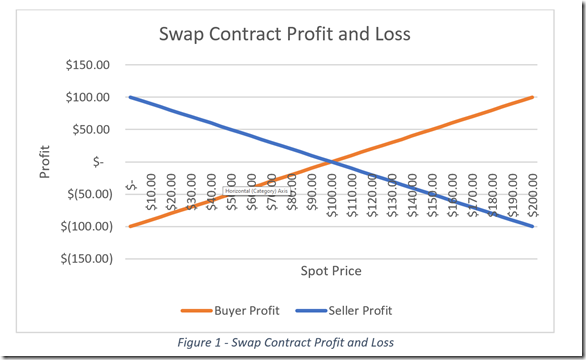
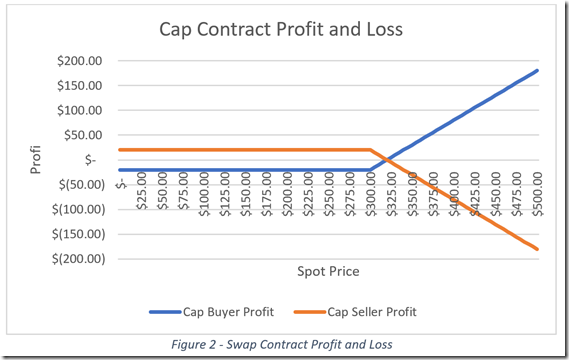
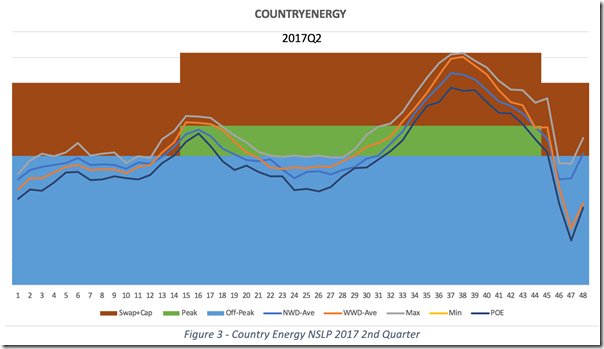
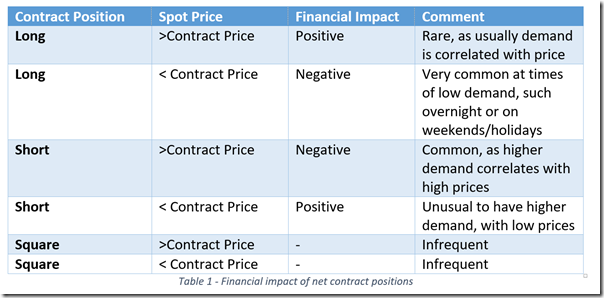
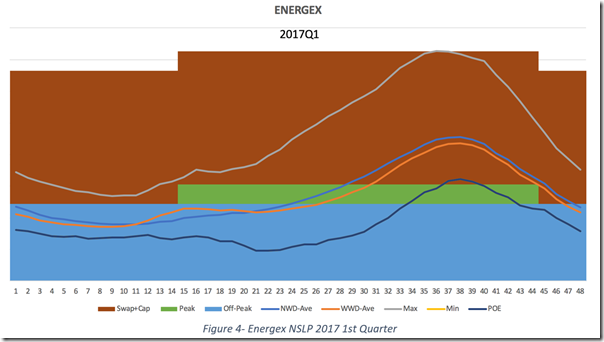
Leave a comment